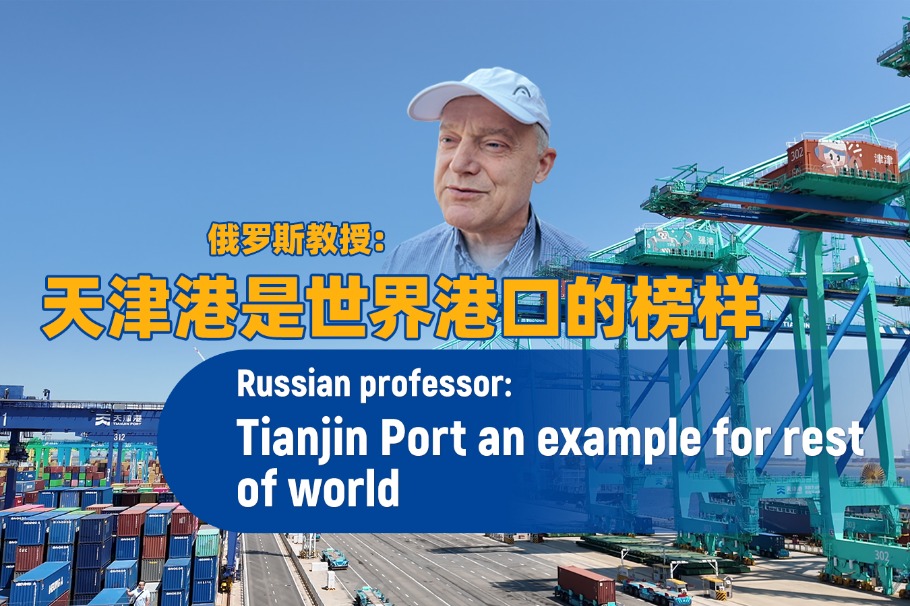Globalization will help world realize innovative potential


Globalization has come under fire in recent years, with people in some countries becoming increasingly frustrated with the uneven distribution of its gains. But weaknesses in management or execution should not be allowed to obscure globalization's far-reaching potential benefits, including its promotion of productivity-enhancing technology transfer and innovation worldwide.
As the April 2018 issue of the International Monetary Fund's World Economic Outlook says, globalization has substantially bolstered the diffusion of knowledge and technology. The increased international competition associated with globalization may also contribute to overall prosperity, as it strengthens incentives to adopt new technologies and to innovate.
By bolstering productivity, the average output can be increased at a relatively low cost. The WEO estimates that in emerging market economies, foreign knowledge accounted for about 0.7 percentage points of annual growth in labor productivity from 2004 to 2014, and a total of 40 percent of observed sectoral productivity growth. From 1995 to 2003, that rate was just 0.4 percentage points.
Moreover, the global diffusion of knowledge and technology generates positive network effects through cross-pollination, as it enables technology-receiving countries to advance their own research and development. Such dynamics are a major reason why, in China, R&D expenditures have skyrocketed, and in the Republic of Korea, stocks of international patents are piling up. These countries have joined traditional leaders in sectors such as electrical and optical equipment and (in the ROK's case) machinery.
However, since the early 2000s, the growth of both labor and total factor productivity has slowed down in frontier economies. These economies have also experienced slower patent growth and, to some extent, declines in R&D investment.
Some argue that the slowdown in innovation in the frontier economies is a temporary phase. The impact of the most recent major wave of innovation (resulting from advances in information and communication technology) is fading, according to this view, while the impact of the emerging wave (powered by artificial intelligence, automation and machine learning) has yet to materialize fully.
Others are less optimistic, noting that transformative advances become increasingly difficult to achieve over time, leading to a secular decline in productivity growth. But even in this scenario, persistent technology gaps imply plenty more opportunities for emerging economies to catch up through adoption.
Of course, to increase local productivity and innovation, economic actors must combine the received technologies with content specific to their location, which cannot be acquired or transferred through standard channels, such as textbooks, and thus cannot be perfectly diffused as either public information or private property.
By taking advantage of idiosyncratic knowledge and local capabilities, countries can make the most of technological diffusion, often beginning with adoption, then moving to adaptation and, later, invention. After adopting this approach, the ROK and China are now engaging in innovation of their own.
And according to the WEO, while the ROK and China are still treated as recipients of global knowledge flows, they are on their way to becoming important sources.
For any emerging or developing economy, success depends on the presence of a broad set of complementary factors: access to finance, quality infrastructure, sufficient skilled labor, and sound managerial and organizational practices. Market failures must not be allowed to undermine the incentive to accumulate knowledge. And the transaction costs associated with doing business-such as trading across borders and hiring and enforcing contracts-must be kept in check. Without this supportive environment, investment in the development of innovation capabilities will likely bring low returns.
Yet such an environment exists in relatively few places. This explains why, though the global innovation landscape is certainly changing, the transformation has not been as fast or profound as one might expect. It also explains what World Bank economists Xavier Cirera and William Maloney have called the "innovation paradox": despite the vast potential returns to investment in innovation in developing countries, those countries pursue far less of it than their advanced counterparts.
Given globalization's enormous potential to bolster innovation, productivity and growth worldwide, more countries should be building their capacity to take advantage of it, instead of opposing it.
Then author is an executive director at the World Bank. Project Syndicate

































